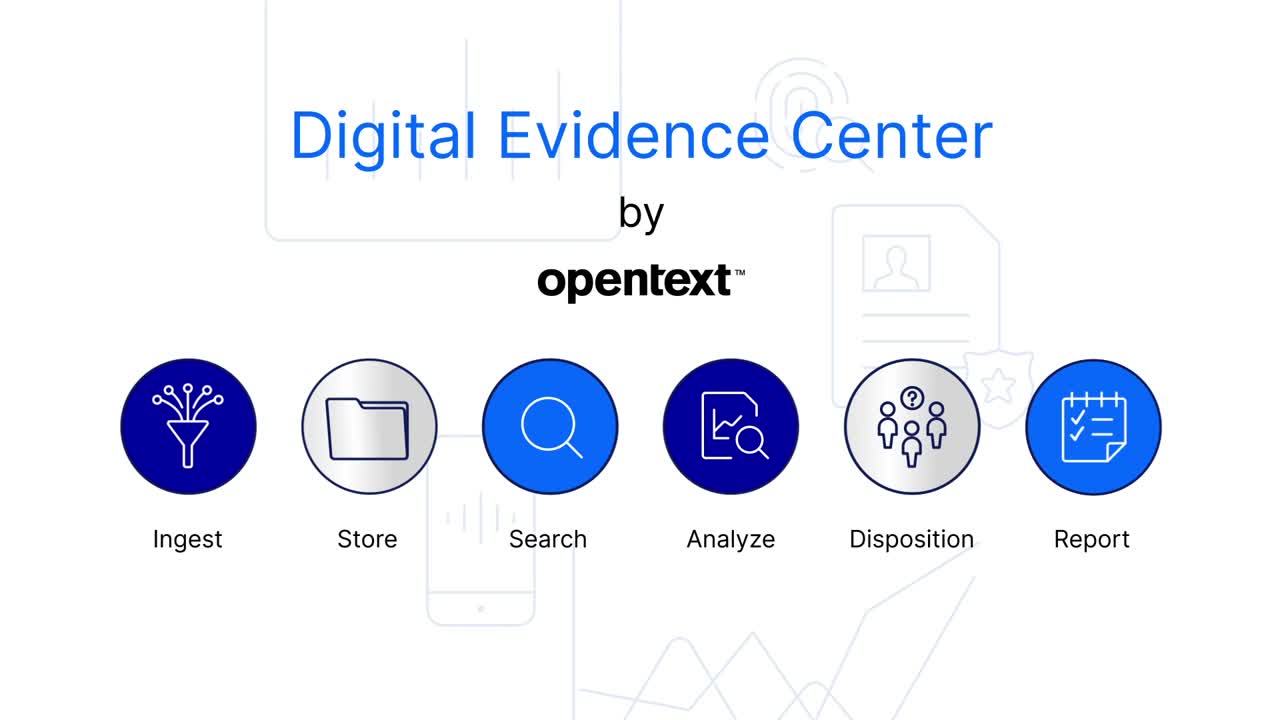Digital Evidence Management
Improve case efficiency by managing multiple evidence types in a single solution

Overview

Much of the evidence law enforcement collects today is digital. This leaves policing organizations challenged with managing and securely storing mountains of digital documents, images, videos, recordings and other digital evidence.
A Digital Evidence Management (DEM) solution provides the ability to ingest, search, store, analyze, share and report on multiple evidence types within a single system.
Key benefits
Impact business and achieve better results.
-
Enable collaboration
Provide seamless evidence access to court systems, attorneys, government agencies, policing organizations and authorized members of the public.
-
Improve public safety
Organize, store and collaborate on digital evidence within a single system to help get offenders “off the street” faster.
-
Enhance productivity
Help personnel quickly access the information they need with a single system that offers customized workflows and a simple interface.
-
Save time and money
Enable more efficient case handling with collaborative management for all types of evidence to minimize resource and budget impacts.
-
Improve compliance and security
Meet CJIS, NIST and FEDRAMP requirements with security and compliance systems, such as role-based access controls and audit trail functionality.
-
Ingest more evidence types
Expand managed evidence beyond body cameras and in-car video systems to include forensic and documentary evidence.
Business impacts
-
Case resolution
Time is critical when it comes to closing cases. Because evidence may be spread across as many as 12 systems, search times increase and important information may be missed. Unify all evidence to draw conclusions and close cases faster.
-
Law enforcement budgets
Law enforcement budgets are already stretched thin. Having multiple systems to capture and manage evidence creates extensive purchase, maintenance, service and training costs. Transition to a single solution to reduce expenses.
-
Evidence chain of custody
Just as evidence property rooms have a custodian, digital evidence needs a dependable audit trail. Multiple systems make proving evidence integrity and authenticity overly complex. Track who accesses digital evidence and how it is used.
-
Law enforcement system integration
Other organizations may generate information that is relevant to a case. Without access to it, investigators, attorneys and judges do not have the complete picture. Ingest information from other applications.
-
Resource efficiency
Law enforcement agencies need to share evidence with prosecutors. Copying a piece of digital evidence onto a USB drive and physically delivering it is slow and prone to risk. Digitally access evidence to streamline the investigative process.